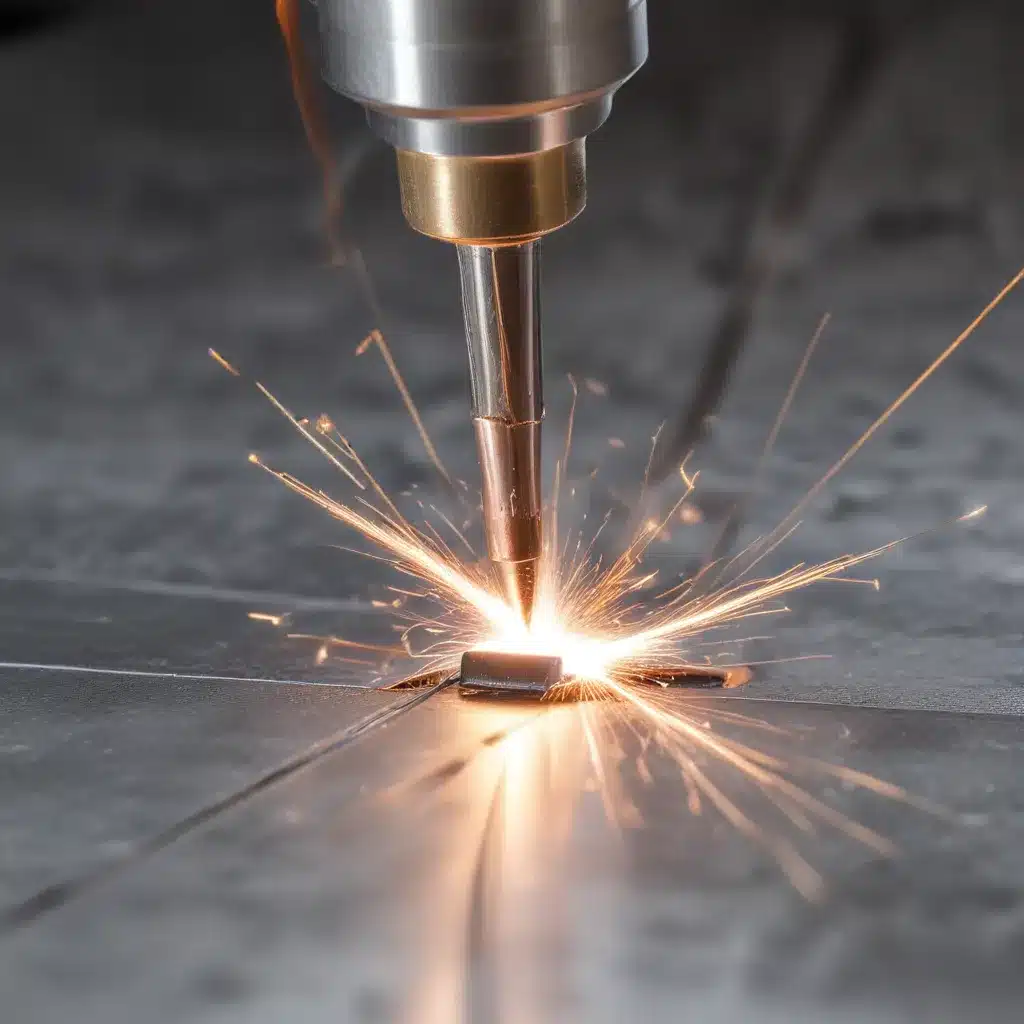
Mastering the Art of Precision Welding
As an experienced welder and metal fabricator, I’ve had the privilege of witnessing the remarkable advancements in welding technologies over the years. One technique that has truly revolutionized the way we approach thin-gauge metal joining is Cold Metal Transfer (CMT) welding. This cutting-edge process has not only transformed the quality and efficiency of my work but has also opened up new possibilities in the world of metal fabrication.
Imagine the satisfaction of seamlessly joining delicate aluminum sheets or precisely fusing dissimilar metals like steel and aluminum, all while minimizing heat input and spatter. That’s the power of CMT welding, and it’s a game-changer in our industry.
Precision and Control: The Heart of CMT Welding
What sets CMT welding apart is its unparalleled level of precision and control. The secret lies in the precisely coordinated interaction between the welding wire and the power source. This synchronization allows for controlled droplet detachment, ensuring minimal heat input and reduced spatter formation.
As I’ve come to understand, the CMT process involves a unique approach to short-circuit welding. Unlike the conventional method, where the wire advances until a short circuit occurs and the high current opens the short, CMT employs a more sophisticated technique. The wire oscillates towards and away from the workpiece, with the short circuit opening in a controlled manner as the wire draws back.
This subtle, yet significant, difference in wire movement translates into remarkable benefits. The heat input is kept extremely low during the short circuit, allowing me to seamlessly weld thin and heat-sensitive materials without distortion. Additionally, the controlled droplet detachment significantly reduces spatter, leading to cleaner welds and less post-weld cleanup.
Bridging the Gap: CMT’s Versatility
One of the standout features of CMT welding is its ability to bridge gaps, a common challenge when working with thin sheets. Conventional gas metal arc welding (GMAW) techniques often struggle with this, as the high heat input can cause the thin material to melt before the gap is closed. CMT’s low heat input, however, enables it to bridge even large gaps, allowing me to achieve exceptional results in both welding and brazing applications.
I’ve encountered situations where I needed to fuse dissimilar metals, such as steel and aluminum, and CMT has proven to be the ideal solution. The low heat input helps minimize the formation of the brittle intermetallic phase that can compromise the joint’s mechanical properties. By carefully controlling the process parameters, I’ve been able to create structurally sound joints between these challenging material combinations.
Automation and Intelligent Control
One of the fascinating aspects of CMT welding is its integration with advanced automation and control systems. The process requires a rapid and precise communication between all the components, from the power source to the wire feed mechanism. This level of synchronization allows for the wire to oscillate at high frequencies, up to 70 Hz, with the arc length being mechanically adjusted after every short circuit.
The inclusion of specialized AC servomotors within the welding gun is a key factor in achieving this high-speed wire manipulation. These motors, coupled with digital control systems, enable the precise back-and-forth movement required for the CMT process. The result is an intelligent, responsive system that can adapt to changes in welding speed, electrode extension, or surface conditions, ensuring consistent arc length and weld quality.
Expanding the Possibilities
As I’ve explored the capabilities of CMT welding, I’ve been continually impressed by its versatility. The process can handle a wide range of base and filler metals, from aluminum and steel to stainless steel, making it a valuable tool across various industries. In the automotive sector, for instance, CMT has found widespread application in the assembly of high-strength steel structures, contributing to the ongoing efforts to reduce vehicle weight and improve fuel efficiency.
In the aerospace industry, I’ve utilized CMT’s precision and minimal heat input to fabricate intricate aluminum structures, where thermal distortion could be a significant concern. The ability to weld thin-gauge materials with exceptional control has opened up new design possibilities and allowed me to tackle complex geometries with confidence.
A Welding Technologist’s Perspective
As a seasoned welding technologist, I’ve had the privilege of exploring the nuances of CMT welding and witnessing its transformative impact on our industry. The meticulous control over heat input, reduced spatter, and versatility in material compatibility make CMT welding a cornerstone in modern manufacturing practices.
I take immense pride in my ability to harness the power of this cutting-edge technology, delivering high-quality, durable welds that meet the demanding standards of my clients. Whether it’s joining delicate aluminum components or bridging gaps in steel structures, CMT welding has empowered me to push the boundaries of what’s possible in metal fabrication.
Embracing the Future of Welding
As I look to the future, I’m excited to see how CMT welding will continue to evolve and shape the landscape of our industry. The recent advancements, such as the development of Retract Droplet Transfer (RDT) welding by Megmeet Welding Technology, have taken the technology to even greater heights.
RDT welding incorporates a comprehensive range of patented technologies that build upon the foundations of CMT, offering even higher precision, efficiency, and quality. With features like ultra-low heat input, microsecond-level polarity switching, and advanced control algorithms, RDT welding represents the next frontier in thin-gauge metal joining.
As a welding professional, I’m eager to stay at the forefront of these innovations, continuously expanding my skills and exploring the full potential of these cutting-edge techniques. By embracing the advancements in CMT and RDT welding, I’m confident that I can deliver unparalleled quality, efficiency, and versatility to my clients, cementing my position as a trusted expert in the world of metal fabrication.
So, whether you’re a fellow welder, a metal fabrication enthusiast, or someone interested in the latest industry trends, I invite you to join me in this exciting journey of discovery. Together, let’s push the boundaries of what’s possible and elevate the art of welding to new heights.


